Pulsating with history at every step, Istanbul is a witness of history, and a destination frequented by travellers and painters also due its natural beauty. The city hosted two European artists from far lands in 1814.
Contributor: RECEP KANKAL
In July 1814, Polish Edward Raczynski travels from Warsaw to the Ottoman lands to learn about and search for ancient artefacts, and visits some destinations in Istanbul and Çanakkale. His German friend Ludwig Fuhrmann also accompanies him on the trip. While Raczynski notes down worthwhile information about places he visits in his travel journal, Fuhrmann, also an artist, attempts to paint numerous historical monuments and natural landscapes. Two friends cross the Ukrainian steppes through Poland, and embark on a ship loaded with wheat from Odessa on August 9th, finally reaching Arnavutköy. They hire a row boat, and head to Galata to discover and appreciate the historical monuments on foot.
ISTANBUL NOTES
Raczynski states that travel books do not adequately depict Istanbul, and expresses that it has an unparalleled beauty in the eyes of artists and a nature that is unique for statesmen. Watching the city from Beyoğlu, the shadows falling on the Anatolian side reminds him of the shadows of Mehmet the Conqueror and Suleiman the Magnificent reaching Anatolia. The darkness of streets result from bay windows of houses. He also points to the fact that interior decoration and designs of Turkish houses are different than West, and houses made of wood are painted in white.
Raczynski visits the Sultan Ahmet Mosque, constructed without harming the natural silhouette of Hagia Sophia, and shaded by sycamores, and says that the view of large sycamore branches extending to the sky, do not give rise to criticism of scenery. The traveller also visits the Egyptian Bazaar saying “I counted 45 streets,” and states that upon seeing the diversity of the showcases, the idea of buying all the items sold appeals to one. The traveller who witnesses the honest trade of shopkeepers, observes that the Turks do not possess avarice or greed, they keep their shops open while performing prayers even during trade, and that there is no theft or incidents alike. He gives information about the vanished historical Hippodrome, and the Obelisk brought from Egypt.
He marks that the stunning view of Marmara Sea and venues on the banks nested with history, invariably amaze him. Raczynski visits natural, historical attractions one cannot get enough of such as Cistern of Philoxenos, Valens Aqueduct, Hagia Sophia Bath next to the entrance gate of Topkapı Palace, Hippodrome of Constantinople, Tophane, Maiden’s Tower, Golden Horn, Bosphorus, Anatolian Fortress, Hünkar Pier, Bahçeköy, and Belgrade forest. The traveller also visits the Sadabad Park of today, near Kağıthane Creek offering an admirable view with surrounding sycamore and cypress trees, marking that a foreigner who visits here to cool off leaving the sultry atmosphere of the city behind, will be impressed with the landscape. Traveller who also visited cemeteries, appreciates the Turkish custom of planting fragrant flowers on graves of relatives, friends and children. Travel says that it is customary for Turks to have tombstones built for the dead, and even the poorest has a tombstone carved in the shape of a turban. Expressing that Turks are content with eating little while maintaining their well-being, also observes how Turks act similarly in the month of Ramadan. Indicating that Istanbul has a different beauty on Ramadan nights, traveller relays that this beautiful city built on seven hills is evocative of a fairy tale when it is illuminated with lights on houses and coloured lamps on minarets. To view this beauty, the traveller rents a row boat one night, and watches Istanbul from the sea.
Traveller states that hillsides on the Bosphorus offering countless beauties, finer with the boats that sail, are transformed into picnic areas and shaded valleys public uses to cool off during summer months. He likens the picturesque view of people from all nations, to a masked garden party. During his journey, the traveller visits Beylerbeyi to see the sultan of the period Mahmut II as he arrives for the Friday divine service, and admires the splendour of the Sultan dressed in a green fox fur, and a turban with a diamond-studded dagger in his satchel, and the discipline of the protocol of high state officials in his courtier.
During his days in Istanbul, he meets a fellow countryman from Poland named Axak who has a good command of Ottoman language and praises the impartiality of historians in the Ottoman period. Pointing out the magnificence of the domes, minarets and the view of cypress trees during his visit to Topkapı Palace, traveller also speaks of the water-tanks shaded by sycamores in the palace courtyard built in Turkish architectural style. Raczynski asks for permission from palace guards to paint this beauty but he is turned down. However his friend Fhurmann measures the walls of the palace with his steps and learns the height from guards, and after visiting the outer court two more times, he achieves to paint Topkapı Palace. Traveller considers Süleymaniye and Sultan Ahmet Mosques built in Turkish architectural style as successful imitations of Hagia Sophia.
The traveller does not only observe historical monuments during the trip, but also addresses general topics. He speaks of the hierarchy in Topkapı Palace, running of Ottoman institutions and the administrative structure of the state as well as the wars in the Roman and Byzantine eras, balances of power there, deplorable incidents, the Turkish bath culture, and the military manoeuvrers of Mehmet the Conqueror during the conquest of Istanbul. He also gives information about the plague epidemic and fires that broke out in Istanbul. Raczynski points out that although Istanbul is crowded, there are no issues regarding distribution of provisions to the people. Raczynski says that due to its strategic structure, sea currents here contribute to maintenance of a dynamic shipping trade. Raczynski states that he tried to stay away from Istanbul locals in the years of the epidemic, and pointing out that the Ottomans bow to divine fate in face of such diseases, notes that he admired how collected they remained even in days of anguish.
TO ÇANAKKALE
The traveller visits historical places within his one month of stay in İstanbul, and decides to visit Çanakkale of utmost significance for history of humanity. In September, he arrives first in Üsküdar and then in Kadıköy, and embarks on a ship on the Anatolian side taking Kınalıada, Burgazada and Heybeliada route. The ship the traveller is on, is forced to anchor in Yeşilköy, Marmara Ereğlisi, Tekirdağ and Kumbağı due to a storm en route to Çanakkale. As the weather becomes more favourable, the ship proceeds to Lapseki. On days that coincide with Ramadan holiday, traveller continues to Bozcaada. Noting down his impressions of the historical artefacts, metal coins and archaeological remains alike, he sets off to visit the island of Lesbos. During his journey on the ship, the captain tells the passengers that the purpose of traveller’s trip was different and that he was an ancient coin collector. Upon this, the enraged traveller explains that his purpose is to learn about the artefacts left by his ancestors who lived, fought and vanished here 3000 years ago, which the entire Europe also takes intense interest in. In his days in Mytilene, he addresses the transformation of the island throughout the history, its natural landscape and the agricultural activities in olive groves and vineyards. In addition, he points out that the Muslim and Greeks who live here do not experience any problems in social life and openly practice their religions. On his return trip from the island, traveller decides to make a stop at the historical Assos ancient city near today’s Behramkale. He does not leave before visiting historical Assos Castle, the ruins and ancient theatre. After a two-week trip in Çanakkale, the traveller returns to Istanbul and again due to the storm, he is forced to make stops at Babakale (Ayvacık), Dalyan Village (Ezine) and Yenişehir Village (Gallipoli) where daggers and swords used by Turks during war were produced. The traveller visits the villages here one by one replete with ruins of Troy ancient city surrounded by the famous Mount Ida offering forest views, and takes down notes of the archaeological findings and ruins.
On his way back to Istanbul, he becomes a guest at a banquet at the house of Russian consul in Çanakkale. The traveller who explains the Turkish-style dishes prepared, marks that the Ottomans love the filled zucchini with yogurt offered. He also recommends the kebab cooked with the lemon and eggs at the table, finding it suitable for Polish palate. En route to Istanbul, he is hosted by the former grand vizier Blind Yusuf Ziyaeddin Pasha who lives in Gallipoli. As soon as he arrives, he comes across the coffee treat he also witnessed in the Orient countries. The traveller who speaks of the agricultural vitality and industriousness of the people on his way from Gallipoli to Istanbul, also points out the misconception Europeans have on Ottomans as being poor. However, he also draws attention to Turkish hospitality, honesty in affairs, sincerity among family members, dynamic social life and them establishing foundations for those in need. He criticizes Europeans for declaring their views on Ottoman culture and science without experiencing Ottoman lifestyle, and for accusing them of being ignorant. He tells that people are benevolent here after seeing the fountains on the way in Tekirdağ. He also witnesses Turks playing the ancestral game of javelin en route to Silivri.
Hours after seeing the game in Silivri, he arrives in Beyoğlu towards the evening passing through Küçükçekmece and Kemerburgaz. Here he comes across a house on fire among the anxious glances of locals. In his last days in Istanbul, traveller takes a tour to see the length of city walls, and visits Sufi groups in lodges in the Eyüp Sultan Mosque and then in Galata. The traveller who stays in Istanbul for nearly two months, starts preparations for his return to Odessa and then back to Poland on October 20th in anticipation of good weather conditions. Traveller who survives hardships with his artist friend because of storms in the Black Sea, arrives in Odessa days later. They stay in quarantine in Odessa until November 27th because of the plague control. Days later, he reaches his country safe and sound.


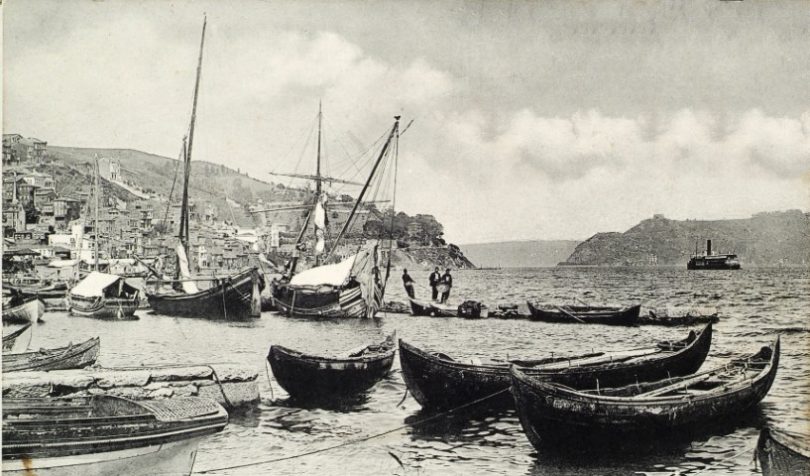
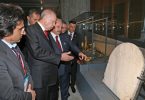
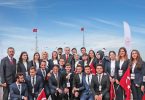
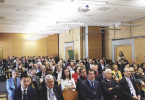


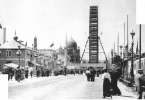
Leave a Comment